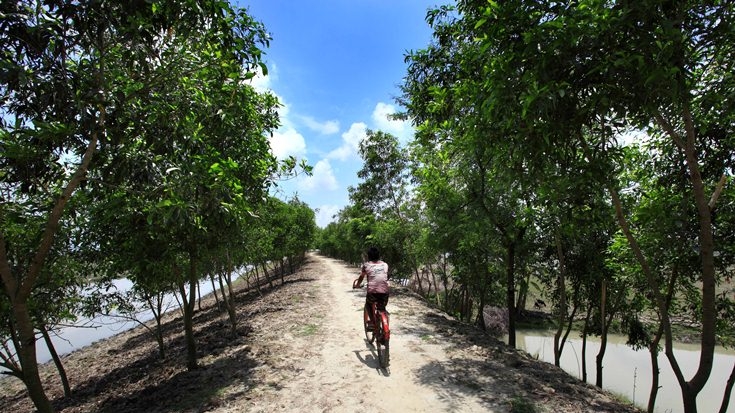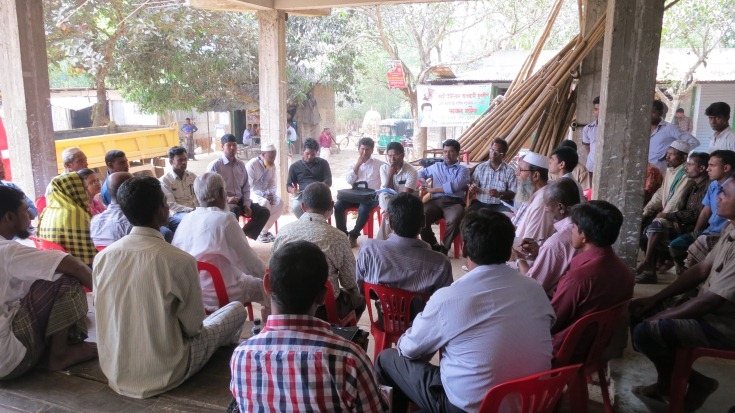Water touches almost every aspect of daily life, yet ironically in a nation all too familiar with monsoon rains, safe and sweet water doesn’t reach everyone. The Water Management Improvement Project (WMIP) seeks to rehabilitate damaged water infrastructure by involving the local communities in water resource management and bolstering the ability of the country’s principal water institutions, particularly Bangladesh Water Development Board (BWDB) and Water Resources Planning Organization (WARPO).
Challenge
Bangladesh is the terminal floodplain delta of three large rivers, the Ganges, the Brahmaputra and the Meghna, with over 90 percent of their catchments’ areas situated outside the country.
Each year during the monsoon season, about 20 to 30 percent of the country is inundated, flooding over 6 million hectares to depths ranging from 30cm to 2m. However, whilst creating opportunities for highly productive farming and fishing systems, these are balanced by the risks of deep flooding, erosion and drainage. By contrast, in the post-monsoon period, soil-moisture content declines rapidly and the water deficit needs to be compensated by irrigation. Agriculture gets the largest share of available water and this in turn affects navigation, drinking water supply, environment, rural health and sanitation. Salinity intrusion, water logging and the contamination of the groundwater aquifer by arsenic further exacerbate this problem. Much work has been done in recent decades to prepare for disasters, but water management remains a critical issue.
Approach
The WMIP supports the government’s goal to decentralize the authority of Bangladesh Water Development Board (BWDB) and hand over the management responsibilities to community organizations, where feasible. By taking the emphasis off flood control and focusing more on water management, the project shifts the responsibility from technicians and bureaucrats to a wide variety of community stakeholders who may participate at any stage of the project development cycle. WMIP covers a total of 67 existing schemes in an area of about 296,500 ha with an approximate population of 3.5million. It is estimated that about 200,000 poorer households will benefit, mainly through increased employment opportunities and higher production of crops and fish.
Furthermore, the project also aims to rehabilitate the 63 BWDB schemes (91 packages) of about 513,000 ha of land damaged by the 2007 floods and later on by 2009 cyclone. Following these natural disasters, about $44.5 million of the project fund has been allocated for rehabilitation activities. WMIP also aims to reform the government institutions involved in the water sector, improving the governance and transparency thereby enhancing their performance to better manage water systems. With this joint approach, the project not only promotes rational management, optimal use and access to water for production, health and hygiene, but also ensures availability of clean water in sufficient quantities for multipurpose use and preservation of the aquatic and water dependent ecosystems.


